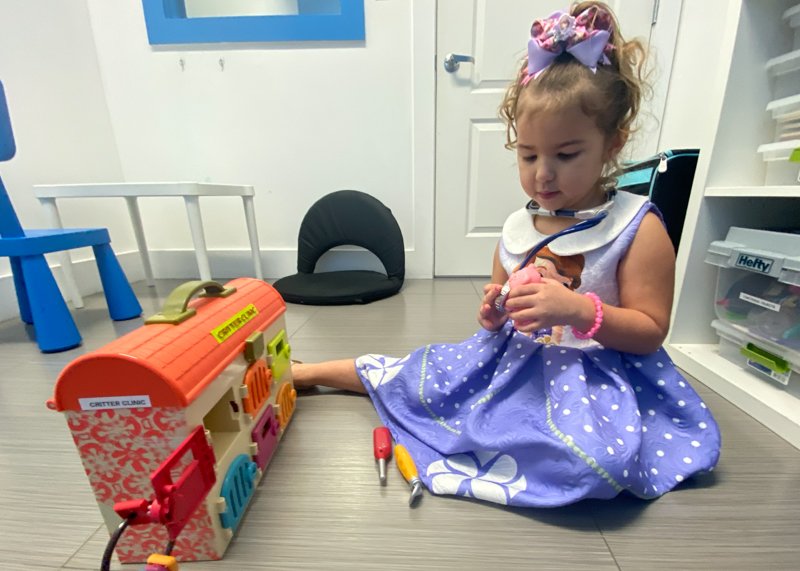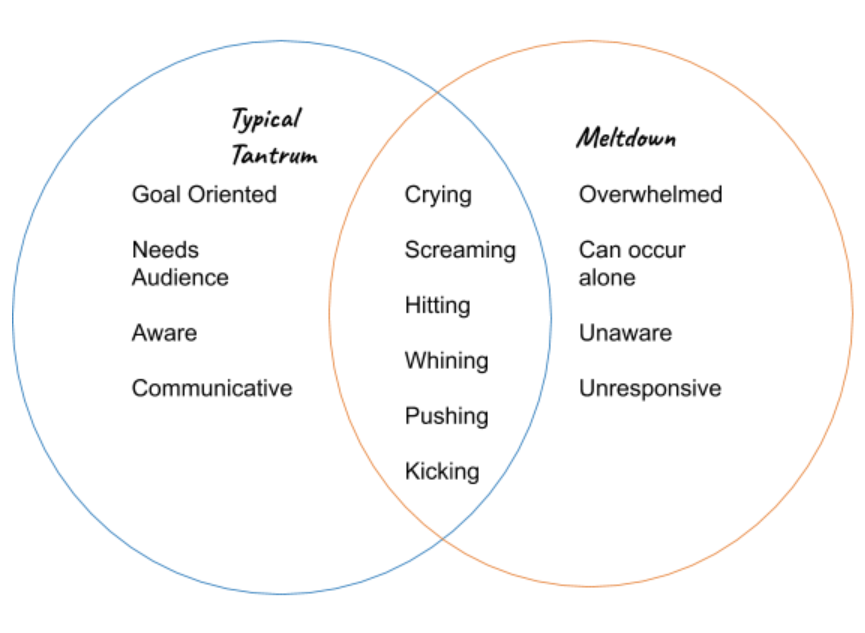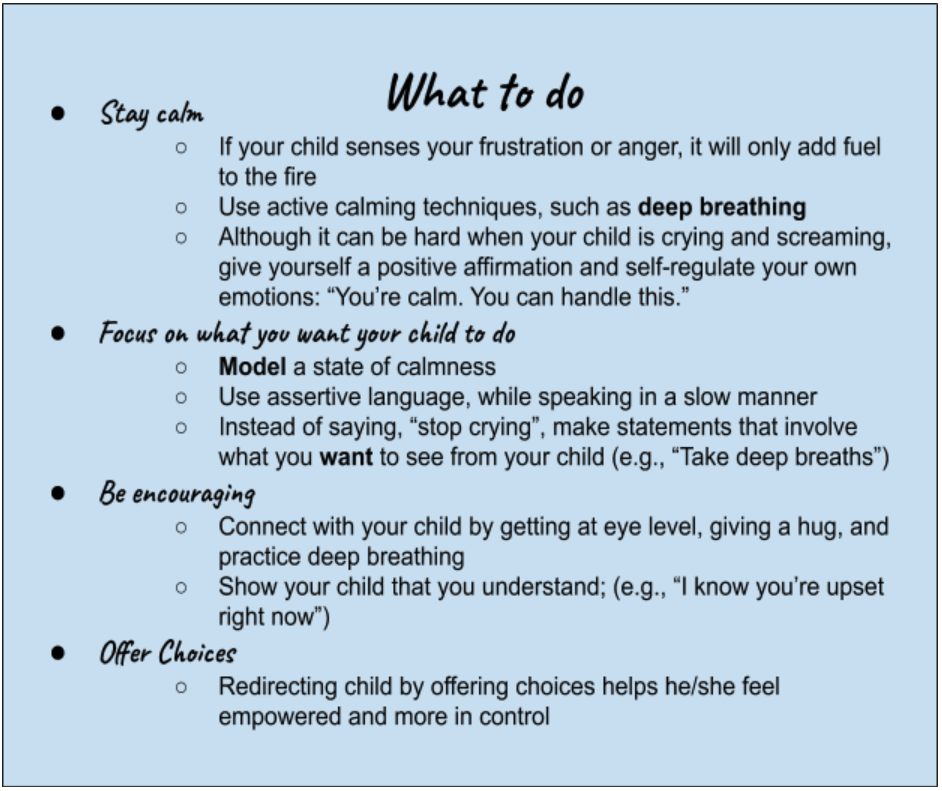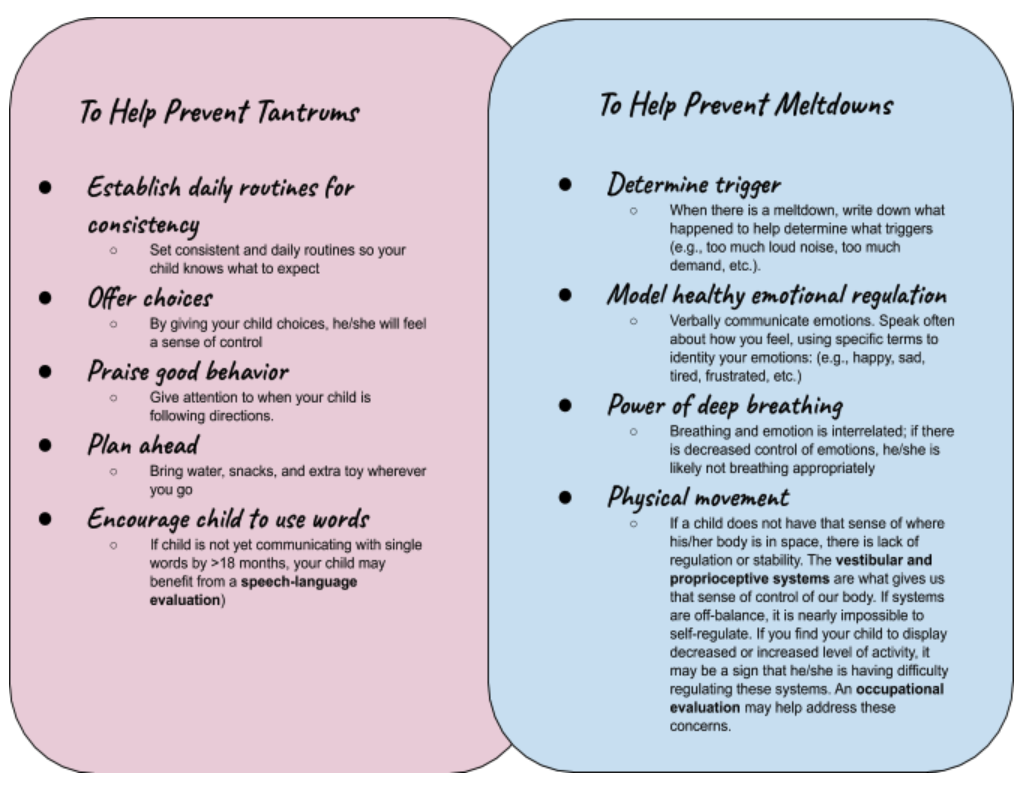Children’s Tantrums and Meltdowns
You’re at the toy store and you happen to notice a toddler crying and screaming on the floor, as you walk by the aisle. “Man”, you think. Or perhaps you’re on the airplane and witness a children’s tantrums by repeatedly kicking the seat in front. “Oh my”, you utter under your breath. These situations can make us turn our heads, but the fact is that they’re not that uncommon — we’ve all encountered or heard about these situations. Perhaps, you’ve even experienced your own child displaying these behaviors.
What is a tantrum and why does it happen?
A tantrum is the way a child expresses his/her frustrations and challenges within the moment. They may present as emotional outbursts, which can range anywhere from whining and crying, to screaming, kicking, hitting, shoving, hitting, laying on the floor, and breath holding. If your child is a toddler, they likely do not have tantrums on purpose. After all, how exhausting it must be for them.
The frustrations and challenges that lead to tantrums may stem from a variety of reasons. Perhaps from not being able to obtain a desired object or complete a certain task. Or perhaps the child doesn’t have the speech and language skills to effectively communicate wants/needs. If your child is hungry, thirsty, or tired, it is also likely that he/she will get frustrated more easily.
What is a tantrum and why does it happen?
A tantrum is the way a child expresses his/her frustrations and challenges within the moment. They may present as emotional outbursts, which can range anywhere from whining and crying, to screaming, kicking, hitting, shoving, hitting, laying on the floor, and breath holding. If your child is a toddler, they likely do not have tantrums on purpose. After all, how exhausting it must be for them.
The frustrations and challenges that lead to tantrums may stem from a variety of reasons. Perhaps from not being able to obtain a desired object or complete a certain task. Or perhaps the child doesn’t have the speech and language skills to effectively communicate wants/needs. If your child is hungry, thirsty, or tired, it is also likely that he/she will get frustrated more easily.

Typical Tantrum vs Meltdown
Although tantrums can be challenging, they are a normal part of child development, depending on the child’s age (~2;0-3;0 years). Experiencing tantrums help children develop regulation skills, specifically emotional regulation skills. Emotional regulation is the learned skill in managing emotions and behaviors based on the appropriate environment, by producing a suitable response. Emotional regulation can occur when a child is able to identify his/her emotion (e.g., happy, sad, tired, mad, silly, etc.), and express accordingly. When a child displays appropriate self-regulation, it is a reflection of developed social skills, emotional intelligence, and academic performance. Typically, elimination of tantrum episodes is observed by 3;6-4;0 years of age, when the child is able to independently self-regulate emotions.
A child who is not emotionally regulated, which is often seen in children that are on the autism spectrum, may not understand his/her feelings or may only be able to identify feelings in a concrete way. Because of this, emotional outbursts present themselves differently due to an overwhelming emotional intensity. The emotions control the child, rather than the child controlling the emotions; thus, regulating thought and behavior is not even being attempted. These are no longer considered tantrums, they are considered emotional meltdowns.
Please refer to Graph 1 below which depicts signs of a tantrum vs. an emotional meltdown.
Graph 1 –

What to do during a tantrum or meltdown?
It is not only difficult to see your child in distress, but it is also emotionally exhausting for the caretaker. Not to mention the public attention. It can be an unpleasant feeling, all around. If you give in to your child’s wants every time, it will become a learned behavior, which will likely enforce more tantrums in the future. If you don’t give in, the parent can easily feel powerless. Not to mention, if you are in a public place, having all eyes on you is not easy. Luckily, there are a variety of evidenced-based strategies that can help both the parent and the child.
At Exceptional Speech Therapy and Exceptional Teletherapy, we are passionate about using strategies based on the renowned Conscious Discipline self-regulation program, which has preliminary evidenced-based research to support effectiveness on managing thoughts, feelings, behaviors, in both children and adults. Look out for a future blog dedicated to Conscious Discipline! In Table 1, please find strategies to use during a tantrum or meltdown, based on research from Conscious Discipline.
Table 1

If your child is displaying destructive behaviors (e.g., hitting himself, throwing objects), it is also important to ensure safety. If possible, try to take your child to a quiet and safe area, while always remaining calm.
The key phrase to remember from this section of the blog is “stay calm”. Of course, much easier said than done. But remember, the calmer you are, the higher chance that your child will mirror that state.
Can you prevent a tantrum or meltdown?
Although there is no way to prevent tantrums or meltdowns, there are an array of useful tools to promote emotional regulation skills to lessen frequency of tantrums and meltdowns. Below please find Table 2, which depicts some of these tools.
Table 2 –

If your child displays frequent tantrums/meltdowns, along with limited expressive language skills, it is recommended to receive both a comprehensive speech-language evaluation and an occupational evaluation. With speech therapy, your child will gain the vocabulary and confidence to communicate wants/needs, and with occupational therapy, your child will gain skills that promote overall healthy emotional regulation. Furthermore, it may be a good idea to share concerns with your child’s pediatrician, to rule out any psychological or physical barriers.
Please call Exceptional Speech Therapy (786) 717-5649 or e-mail info@exceptionalspeechtherapy.com, if you are interested in learning more about obtaining a speech-language evaluation or occupational evaluation (we also offer free screenings).
We are eager to help our children take those steps in the direction of healthy emotional regulation.
Andrea Scola, M.S., CF-SLP
Exceptional Speech Therapy Blog Writer
References:
Discipline Tips. (2019, July 18). Retrieved June 6, 2020, from https://consciousdiscipline.com/free-resources/discipline-tips/.
Amy, & Guttmann, E. (2019, January 21). Why You Should Be Glad When Your Kid Throws a Tantrum (Maybe): Emotional Regulation in Children. Retrieved June 6, 2020, from https://handsonotrehab.com/tantrum-emotional-regulation-in-children/.
O’Donnell, L. M. (Ed.). (2018, June). Temper Tantrums (for Parents) – Nemours KidsHealth. Retrieved June 6, 2020, from https://kidshealth.org/en/parents/tantrums.html.
Stern, J. (2019, September 8). How to Handle Meltdowns. Retrieved June 6, 2020, from https://www.aane.org/how-to-handle-meltdowns/
Temper tantrums in toddlers: How to keep the peace. (2018, August 8). Retrieved from https://www.mayoclinic.org/healthy-lifestyle/infant-and-toddler-health/in-depth/tantrum/art-20047845.
Contact Us
If you have any questions about speech therapy in Miami or Doral, Florida or would like to book an appointment for speech therapy, please call Exceptional Speech Therapy at 786.717.5649 or fill out the form below.
Myofunctional Therapy for Speech and Swallowing Disorders
Speech and swallowing disorders can significantly impact an individual's quality of life, affecting their ability to communicate effectively and enjoy meals without difficulty. While traditional therapies have long been used to address these challenges, a relatively newer approach, myofunctional therapy, [...]
What is “Scripting”? : A Guide for Parents of Kids with Autism Spectrum Disorder
Scripts are a superpower for kids with Autism Spectrum Disorder (ASD)! Let's dive into the wonderful world of scripting, what it is, and how parents can navigate this unique communication style with ease. What is Scripting? Imagine having your own [...]
5 Creative Ways to Wean Your Child off the Pacifier
Ah, the beloved pacifier – the magical tool that soothes fussy babies and saves parents from countless sleepless nights. But, there comes a time when the binky must go, as it can impact a child's oral development, sleep habits, and [...]


